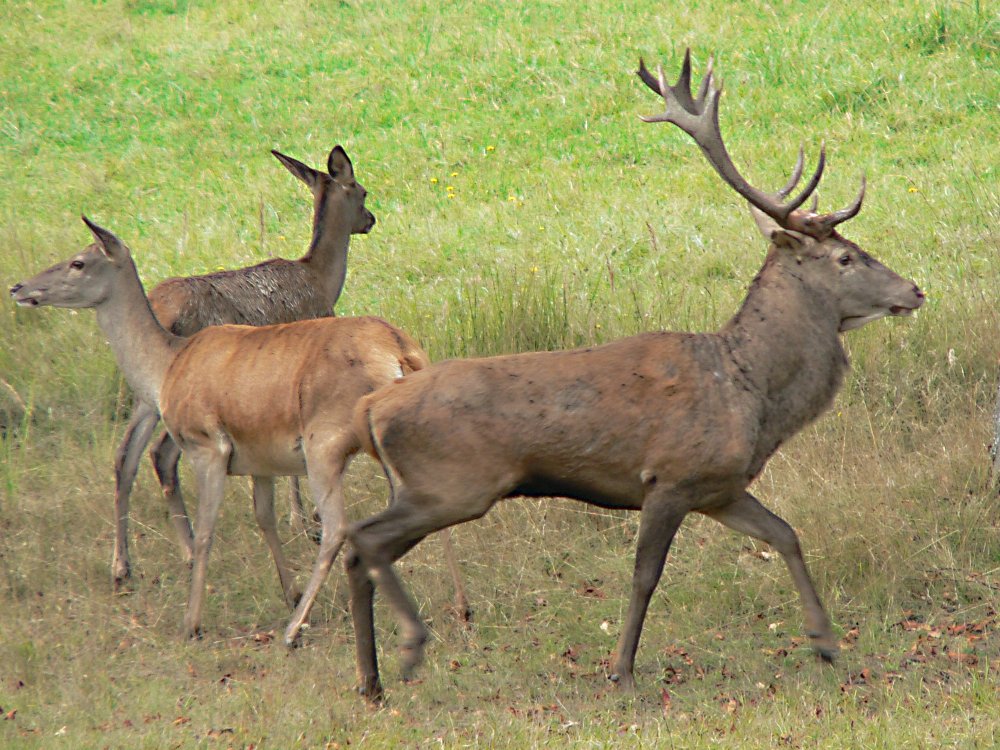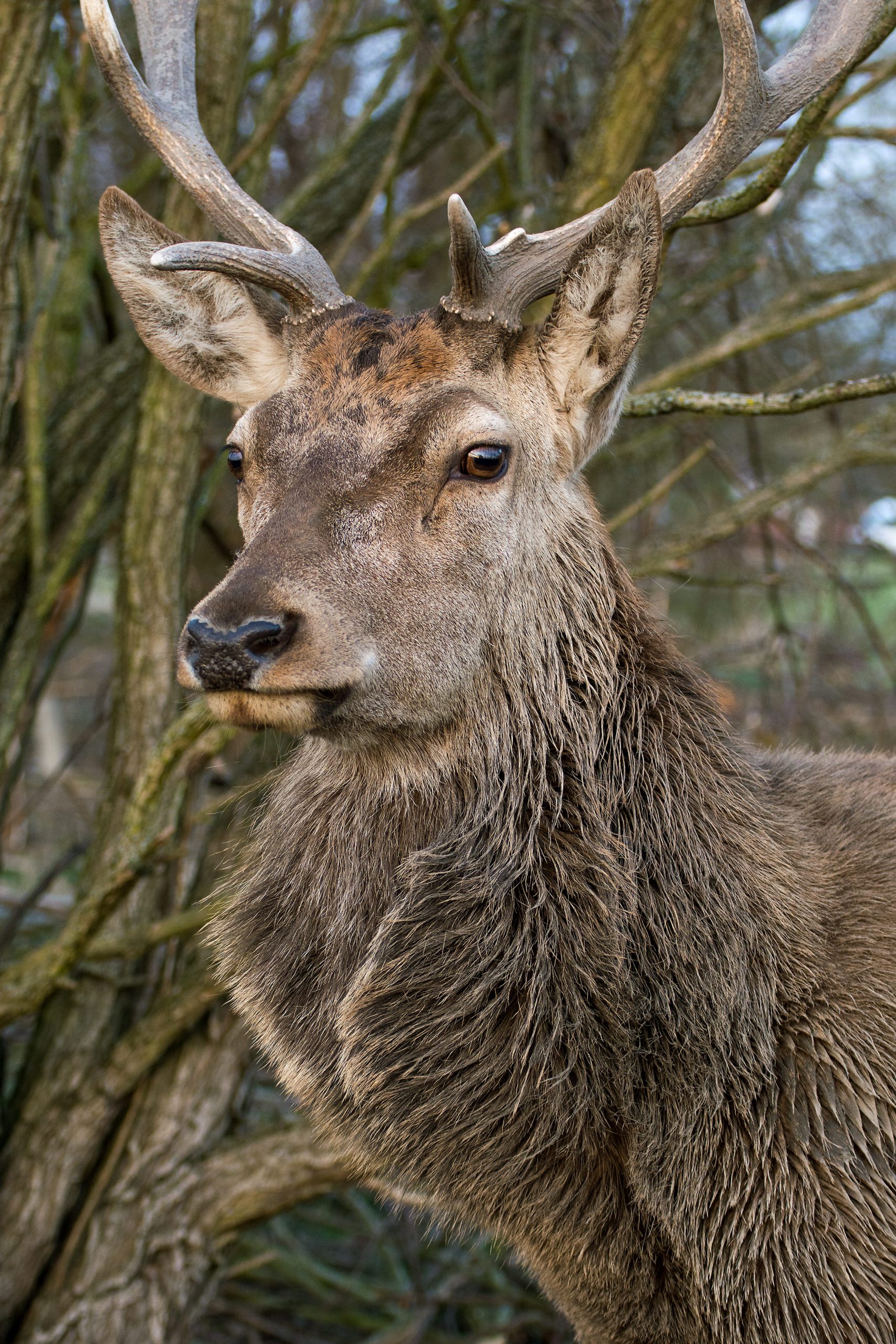|
Onchocerca Tubingensis
''Onchocerca tubingensis'' is the name of a nematode. It was discovered in 1974 and published by O. Bain und H. Schulz-Key in ''Tropenmedizin und Parasitologie'' and named after Tübingen. Red deer (''Cervus elaphus'') are the host of this parasite. The adult worms of Onchocerca tubingensis are found in subcutaneous nodules on the caudal part of the back, while the microfilariae are distributed on the ventral part of the body with maximum densities in the region of the sternum The sternum or breastbone is a long flat bone located in the central part of the chest. It connects to the ribs via cartilage and forms the front of the rib cage, thus helping to protect the heart, lungs, and major blood vessels from injury. Sh ... and with lower densities on the inner sides of the hindlegs. The infection rates of 94 red deer investigated in southern Germany during 1907–1974 were 23%. References Parasitic nematodes of mammals Cervus Spirurida Tübingen Nematodes describ ... [...More Info...] [...Related Items...] OR: [Wikipedia] [Google] [Baidu] |
Onchocerca
Onchocerca is a genus of parasitic roundworm. It contains one human parasite – ''Onchocerca volvulus'' – which is responsible for the neglected disease Onchocerciasis, also known as "river blindness" because the infected humans tend to live near rivers where host black flies live. Over 40 million people are infected in Africa, Central America, and South America. , Indiana State University. Accessed 14 February 2008. Other species affect cattle, horses, etc. List of species *'' Onchocerca armillata'' *''[...More Info...] [...Related Items...] OR: [Wikipedia] [Google] [Baidu] |
Tübingen
Tübingen (, , Swabian: ''Dibenga'') is a traditional university city in central Baden-Württemberg, Germany. It is situated south of the state capital, Stuttgart, and developed on both sides of the Neckar and Ammer rivers. about one in three of the 90,000 people living in Tübingen is a student. As of the 2018/2019 winter semester, 27,665 students attend the Eberhard Karls University of Tübingen. The city has the lowest median age in Germany, in part due to its status as a university city. As of December 31, 2015, the average age of a citizen of Tübingen is 39.1 years. The city is known for its veganism and environmentalism. Immediately north of the city lies the Schönbuch, a densely wooded nature park. The Swabian Alb mountains rise about (beeline Tübingen City to Roßberg - 869 m) to the southeast of Tübingen. The Ammer and Steinlach rivers are tributaries of the Neckar river, which flows in an easterly direction through the city, just south of the medieval old t ... [...More Info...] [...Related Items...] OR: [Wikipedia] [Google] [Baidu] |
Red Deer
The red deer (''Cervus elaphus'') is one of the largest deer species. A male red deer is called a stag or hart, and a female is called a hind. The red deer inhabits most of Europe, the Caucasus Mountains region, Anatolia, Iran, and parts of western Asia. It also inhabits the Atlas Mountains of Northern Africa; its early ancestors are thought to have crossed over to Morocco, then to Algeria, Libya and Tunisia via the Strait of Gibraltar, becoming the only species of true deer (Cervidae) to inhabit Africa. Red deer have been introduced to other areas, including Australia, New Zealand, the United States, Canada, Peru, Uruguay, Chile and Argentina. In many parts of the world, the meat (venison) from red deer is used as a food source. Red deer are ruminants, characterized by a four-chambered stomach. Genetics, Genetic evidence indicates that the red deer, as traditionally defined, is a species group, rather than a single species, though exactly how many species the group includes rem ... [...More Info...] [...Related Items...] OR: [Wikipedia] [Google] [Baidu] |
Microfilariae
::''Microfilaria may also refer to an informal "collective group" genus name, proposed by Cobbold in 1882. While a convenient category for newly discovered microfilariae which can not be assigned to a known species because the adults are unknown, it is seldom used today.'' The microfilaria (plural microfilariae, sometimes abbreviated mf) is an early stage in the life cycle of certain parasitism, parasitic nematodes in the family Onchocercidae. In these species, the adults live in a tissue or the circulatory system of vertebrates (the parasitic life cycles, "definitive hosts"). They release microfilariae into the bloodstream of the vertebrate host. The microfilariae are taken up by blood-feeding arthropod Vector (epidemiology), vectors (the "parasitic life cycles, intermediate hosts"). In the intermediate host the microfilariae develop into infective larvae that can be transmitted to a new vertebrate host. The presence of microfilariae in the host bloodstream is called "microfila ... [...More Info...] [...Related Items...] OR: [Wikipedia] [Google] [Baidu] |
Sternum
The sternum or breastbone is a long flat bone located in the central part of the chest. It connects to the ribs via cartilage and forms the front of the rib cage, thus helping to protect the heart, lungs, and major blood vessels from injury. Shaped roughly like a necktie, it is one of the largest and longest flat bones of the body. Its three regions are the manubrium, the body, and the xiphoid process. The word "sternum" originates from the Ancient Greek στέρνον (stérnon), meaning "chest". Structure The sternum is a narrow, flat bone, forming the middle portion of the front of the chest. The top of the sternum supports the clavicles (collarbones) and its edges join with the costal cartilages of the first two pairs of ribs. The inner surface of the sternum is also the attachment of the sternopericardial ligaments. Its top is also connected to the sternocleidomastoid muscle. The sternum consists of three main parts, listed from the top: * Manubrium * Body (gladiolus) * ... [...More Info...] [...Related Items...] OR: [Wikipedia] [Google] [Baidu] |
Cervus Elaphus 11
''Cervus'' is a genus of deer that primarily are native to Eurasia, although one species occurs in northern Africa and another in North America. In addition to the species presently placed in this genus, it has included a whole range of other species now commonly placed in other genera. Additionally, the species-level taxonomy is in a state of flux. Taxonomy Genus Until the 1970s, ''Cervus'' also included the members of the genera '' Axis'', ''Dama'', and ''Elaphurus'', and until the late 1980s, it included members of '' Rucervus'' and '' Rusa''. Species In the third edition of '' Mammal Species of the World'' from 2005, only the red deer (''C. elaphus'') and sika deer (''C. nippon'') were recognized as species in the genus ''Cervus''. Genetic and morphological evidence suggest more species should be recognized. For example, the species ''Cervus canadensis'' (elk/wapiti) is considered a separate species. Red deer species group Within the red deer species group, some s ... [...More Info...] [...Related Items...] OR: [Wikipedia] [Google] [Baidu] |
Parasitic Nematodes Of Mammals
Parasitism is a close relationship between species, where one organism, the parasite, lives on or inside another organism, the host, causing it some harm, and is adapted structurally to this way of life. The entomologist E. O. Wilson has characterised parasites as "predators that eat prey in units of less than one". Parasites include single-celled protozoans such as the agents of malaria, sleeping sickness, and amoebic dysentery; animals such as hookworms, lice, mosquitoes, and vampire bats; fungi such as honey fungus and the agents of ringworm; and plants such as mistletoe, dodder, and the broomrapes. There are six major parasitic strategies of exploitation of animal hosts, namely parasitic castration, directly transmitted parasitism (by contact), trophicallytransmitted parasitism (by being eaten), vector-transmitted parasitism, parasitoidism, and micropredation. One major axis of classification concerns invasiveness: an endoparasite lives inside the host's body; an ect ... [...More Info...] [...Related Items...] OR: [Wikipedia] [Google] [Baidu] |
Cervus
''Cervus'' is a genus of deer that primarily are native to Eurasia, although one species occurs in northern Africa and another in North America. In addition to the species presently placed in this genus, it has included a whole range of other species now commonly placed in other genera. Additionally, the species-level taxonomy is in a state of flux. Taxonomy Genus Until the 1970s, ''Cervus'' also included the members of the genera ''Axis'', '' Dama'', and ''Elaphurus'', and until the late 1980s, it included members of ''Rucervus'' and '' Rusa''. Species In the third edition of ''Mammal Species of the World'' from 2005, only the red deer (''C. elaphus'') and sika deer (''C. nippon'') were recognized as species in the genus ''Cervus''. Genetic and morphological evidence suggest more species should be recognized. For example, the species ''Cervus canadensis'' (elk/wapiti) is considered a separate species. Red deer species group Within the red deer species group, some sources ha ... [...More Info...] [...Related Items...] OR: [Wikipedia] [Google] [Baidu] |
Spirurida
Spirurida is an order of spirurian nematodes. Like all nematodes, they have neither a circulatory nor a respiratory system. Some Spirurida, like the genus ''Gongylonema'', can cause disease in humans. One such disease is a skin infection with Spirurida larvae, called "creeping disease". Some species are known as eyeworms and infect the orbital cavity of animal hosts. Systematics The Camallanida are sometimes included herein as a suborder, and the Drilonematida are sometimes placed here as a superfamily. There are doubts about the internal systematics of the Spirurida, and some groups placed herein might belong to other spirurian or even secernentean lineages.ToL (2002) The following superfamilies are at least provisionally placed in the Spirurida: * Acuarioidea * Aproctoidea * Diplotriaenoidea * Filarioidea * Gnathostomatoidea * Habronematoidea * Physalopteroidea * Rictularioidea * Spiruroidea * Thelazioidea Thelazioidea is a superfamily of spirurian nematodes in th ... [...More Info...] [...Related Items...] OR: [Wikipedia] [Google] [Baidu] |





